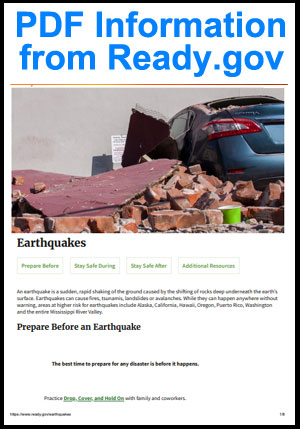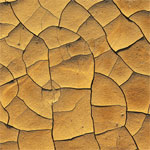Earthquakes
With most disasters, there is some warning that trouble is coming. You have time to prepare, hide or run. That's generally not the case with earthquakes. When the initial shaking starts, you only have a few seconds to get yourself to a safe place.
What happens after can often be worse than the quake. It could trigger a volcanic eruption, fires, landslides or a catastrophic tsunami like the one that struck Indonesia in 2004, killing an estimated 230,000 people.
To properly prepare for an earthquake, you first need to understand the basics. Start with this five minute video from National Geographic.
Earthquakes 101 | National Geographic
These are the different types of quakes, the different intensity levels, and how to prepare before, protect yourself during, and survive after the big one hits.
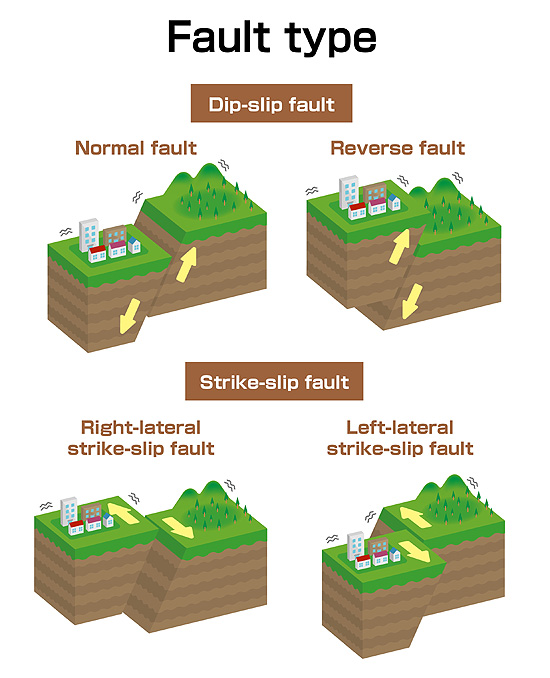
Earthquakes generally happen along a fault line. The three main types are normal, reverse (thrust) and strike-slip.
From Wikipedia:
“Normal faults occur mainly in areas where the crust is being extended such as a divergent boundary. Reverse faults occur in areas where the crust is being shortened such as at a convergent boundary. Strike-slip faults are steep structures where the two sides of the fault slip horizontally past each other; transform boundaries are a particular type of strike-slip fault. Many earthquakes are caused by movement on faults that have components of both dip-slip and strike-slip; this is known as oblique slip.”
The most powerful earthquakes, called megathrust earthquakes, are of magnitude 8 or more. Those typically strike reverse faults, especially ones along convergent plate boundaries. Smaller earthquakes less than magnitude 7 are usually associated with normal faults.
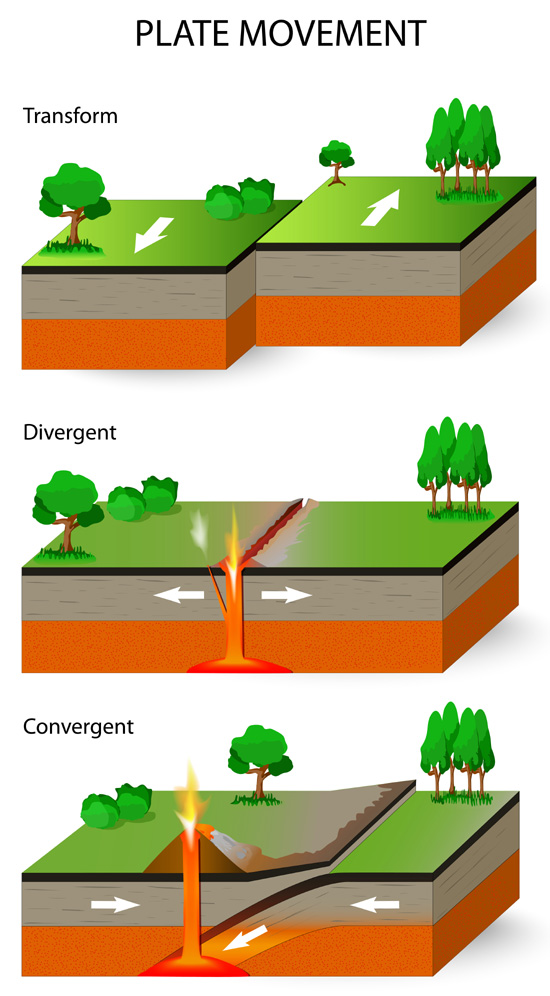
How Strong is that Eartquake?
There are many different ways to measure different aspects of an earthquake:
Magnitude is the most common measure of an earthquake's size. It is a measure of the size of the earthquake source and is the same number no matter where you are or what the shaking feels like. The Richter scale is an outdated method for measuring magnitude that is no longer used by the USGS for large, teleseismic earthquakes. The Richter scale measures the largest wiggle (amplitude) on the recording, but other magnitude scales measure different parts of the earthquake. The USGS currently reports earthquake magnitudes using the Moment Magnitude scale, though many other magnitudes are calculated for research and comparison purposes.
Intensity is a measure of the shaking and damage caused by the earthquake; this value changes from location to location.
Types of Magnitudes
Magnitude is expressed in whole numbers and decimal fractions. For example, a magnitude 5.3 is a moderate earthquake, and a 6.3 is a strong earthquake. Because of the logarithmic basis of the scale, each whole number increase in magnitude represents a tenfold increase in measured amplitude as measured on a seismogram.
When initially developed, all magnitude scales based on measurements of the recorded waveform amplitudes were thought to be equivalent. But for very large earthquakes, some magnitudes underestimate true earthquake size, and some underestimate the size. Thus, we now use measurements that describe the physical effects of an earthquake rather than measurements based only on the amplitude of a waveform recording.

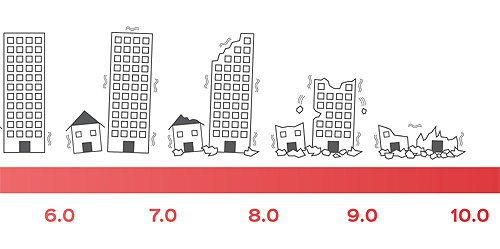
Soil Liquefaction
When an earthquake shakes water-saturated loose ground, it can start to act like a liquid. What was solid, can give way and allow buildings and vehicles to sink. Below is a video showing what it looks like.
How to Protect Yourself During an Earthquake | Disasters
Pro Survival Tip
Take stairs instead of elevators when you're in a city prone to earthquakes. If a massive quake strikes, power is quickly cut off. If you're riding an elevator, you're now trapped in a metal box if that building doesn't have backup power.
Elevators in major cities can move thousands of people during peak commute times. To escape, you need rescuers that have specialized training and tools. Unfortunately, those rescuers will have other priorities if the earthquake is big.
Fires will be blazing that have to be extinguished. Water will run low. Cell phone service may be spotty or non-existent. In hard-hit areas, the power could remain off for weeks.
That means anyone in an elevator is dead.
Meanwhile, stairwells are hardened against disasters, so they remain usable in emergencies. In most buildings, stairwells are the safest place during an emergency. Plus, it's better for your health to use the stairs.
Where are people more at risk? In the United States, that means places like Seattle, San Francisco and Los Angeles. Quito in Ecuador, Kathmandu in Nepal, Tokyo, Nagoya and Kobe in Japan. Manila in the Philippines, Delhi in India, Islamabad in Pakistan, Mexico City in Mexico, Izmir in Turkey and Jakarta in Indonesia.
If you're able, take the stairs. Get some exercise. Live longer and safer.
Aftershocks
Whenever a major earthquake hits, you've got to stay alert for aftershocks. That's an earthquake that happens after the main earthquake or mainshock. They are always smaller than the mainshock, but they can still be extremely dangerous.
Preparation - Survival
Click Here for information on what to do from the United States government website, Ready.gov.
Click Here for the Earthquake Safety Video Series
Click Here for Earthquake Information Poster
How to Prepare for an Earthquake - America's Prepareathon
Click Here for the Red Cross Earthquake Safety Information.
Click Here to download a PDF file with information on what to do from the United States government website, Ready.gov.
Return to 101 Ways to Die Home Page
This information is presented to make people aware of the larger world around them. If you can prepare for something as devastating as this, you're much more likely to be ready for smaller disruptions. Be aware and prepare.
6/6/2020
Updated 4/15/2021
Updated 6/3/2021
Updated 3/3/2022
